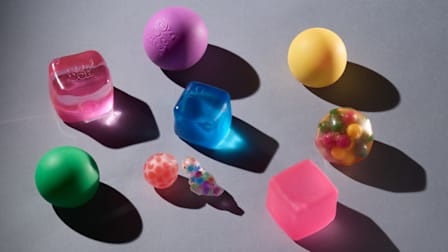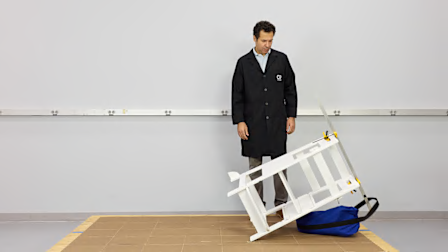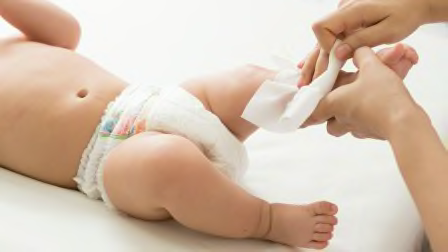What's a 5-Point Harness, and Why Does It Matter for Your Baby’s Car Seat or Stroller?
CR’s experts have tested a wide variety of harnesses on car seats, strollers, and high chairs. Here’s what the best-designed ones have in common.
When you shop through retailer links on our site, we may earn affiliate commissions. 100% of the fees we collect are used to support our nonprofit mission. Learn more.
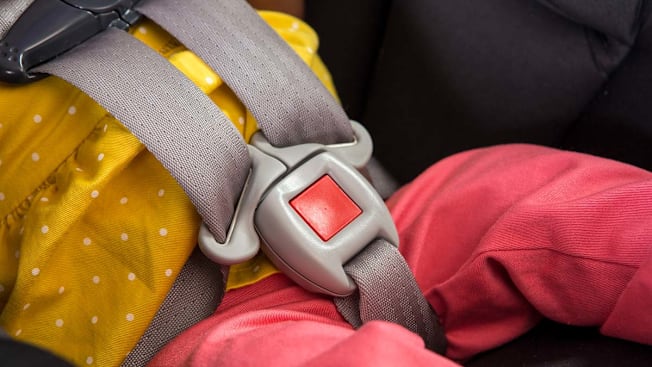
I am a self-proclaimed lazy buckler. When I finally get a wriggling toddler into a stroller or a baby into a high chair, bending over for 5 minutes fighting with the straps of a fussy harness is literally the last thing I want to do. To complicate matters, I have a chronic spine condition that means it’s physically painful, if not impossible some days, to bend over for longer than a second or two while strapping a baby in.
But not buckling in a child—or not buckling them in properly—simply isn’t worth the risk, especially in the car. The National Highway Traffic Safety Administration reports that in 2023, 43 percent of children who were killed in car crashes were unrestrained.
What Is a Five-Point Harness, Anyway?
If you haven’t made a point of studying harnesses between bottle feedings, diapers, and nap schedules, here’s a primer—a five-point harness is the safest option for harness types, according to Joan Muratore, who oversees testing of baby products at CR’s lab in Yonkers, N.Y., because it securely holds your child in their car seat, stroller, swing, high chair, stroller wagon, bouncer seat, or anywhere else your child may need to be safely seated.
The five points are:
- Two shoulder straps.
- Two hip straps.
- A single strap between the legs.
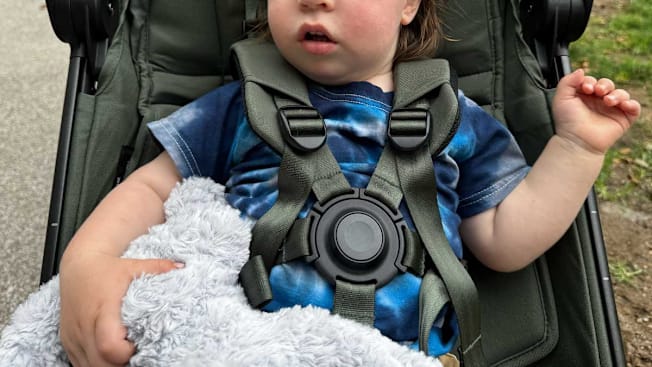
Photo: Angela Lashbrook/Consumer Reports Photo: Angela Lashbrook/Consumer Reports
All these straps latch together in front of the child. By contrast, a three-point strap system only goes between the legs and over the shoulders, or across both hips and between the legs.
“If you have an ‘escape artist’ toddler, a five-point is a better bet to keep him or her safely in the stroller or other baby gear item,” Muratore says. “With a three-point harness, if the child can get leverage with his feet, he may be able to wiggle up and out of the harness without having to undo the buckle. He could fall and get badly injured.” Five-point harnesses are fairly common in many types of baby gear, including car seats, strollers, stroller wagons, high chairs, swings, boosters, and bouncers, because of the added security.
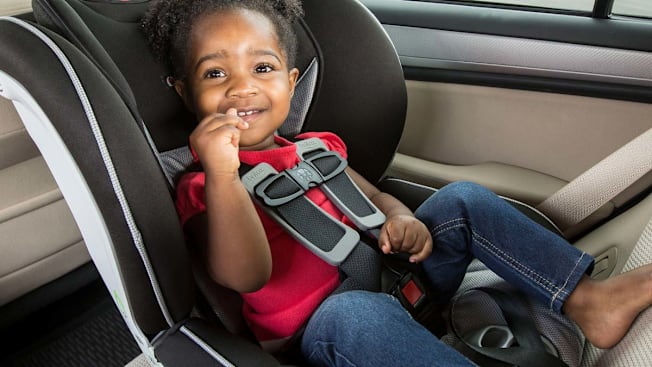
Photo: Consumer Reports Photo: Consumer Reports
In car seats, you might also notice a chest clip that helps position a child properly in the seat, according to Emily A. Thomas, PhD, associate director of auto safety at Consumer Reports. “Manufacturers instruct users to keep the chest clip at armpit level so that the harness straps stay over the tops of the shoulders,” Thomas says. “This coupled with a snug harness helps prevent the strap from falling off the shoulders,” and also reduces the risk of your child coming out of the car seat harness in the event of a crash, according to Thomas.
Are Five-Point Harnesses Required for Baby Products?
Despite their safety benefits, five-point harnesses are not actually required for car seats, strollers, swings, seats, or any other kind of baby gear. “A five-point harness, while used on almost every car seat restraint excluding boosters, is not required in the U.S.,” says Michael Bloch, who leads child car seat project tests at Consumer Reports. But safety experts say parents should absolutely look for a five-point harness as an important safety feature.
“A well-designed five-point harness is the safest way to strap in your baby or toddler to many products, not just car seats,” says Gabe Knight, a senior safety policy analyst for CR. “Whether using a stroller, high chair, or swing, a five-point harness can contain a child much better than a three-point harness. But even the best harness system only works if it’s used correctly and consistently, so it’s important for baby gear to be designed with accessibility and ease of use in mind.”
Muratore adds that while a five-point harness isn’t required, it’s something consumers should look for from a safety standpoint. In high chairs, for example, fall risk can occur if a baby slides down and out of the bottom, not just side to side, so a five-point harness is part of the safety system that keeps baby secure in the seat. CR recommends five-point harnesses as a safety feature for strollers and stroller wagons. In fact, all of Consumer Reports’ recommended car seats, strollers, and high chairs feature five-point harnesses to help parents find the safest products.
What to Look For in a Five-Point Harness
No-Rethread Harness
As your child grows, their harness straps will need to be adjusted periodically to suit their changing height. Once upon a time, this meant having to pull the harness straps out of the back of your car seat or stroller and rethreading them through the next-highest notch or slot each time your kiddo went through a growth spurt (fun times). Fortunately, no-rethread harnesses in car seats and strollers make the process simpler. Here are a few products CR has tested that feature a no-rethread five-point harness.
Easy Adjustment
Look for a five-point harness that’s easy to adjust and tighten, so your baby stays snug and centered in their seat—even when they’re feeling sleepy (or wriggly). Here are a couple of products CR has tested that feature exceptionally easy-to-adjust five-point harnesses.
Magnetic Closure
If you’ve ever tried to buckle in a wiggling, wrangling toddler, you’ll know that a little help from a magnet can be a lifesaver. Magnetic five-point harness closures are increasingly popular on strollers and high chairs, and make quick work of strapping a little one in, although for crash safety reasons, you will not see magnetic closures on car seat harnesses, only on some chest clips. (Magnetic buckles also may not be suitable for some children with implanted medical devices—talk to your pediatrician if you have concerns.) Here are a few products CR has tested that feature a five-point harness with a magnetic closure.
Buckle Holders
Some car seats and strollers feature magnetic buckle holders (or cleverly designed buckle pockets) that keep the harness neatly out of the way while you lower your baby into the seat, so you don’t have to fumble with the straps while you’re getting your baby situated. If you’ve ever wished for an extra pair of hands, this might just be the next best thing. Here are a few products CR has tested that feature a five-point harness with buckle holders.
Convertible Harness
Once your baby becomes a toddler who can sometimes be reasoned with, a convertible five-point to three-point harness can be a way to encourage your growing child’s sense of independence when getting into their stroller, stroller wagon, or feeding chair. “A nice option for some baby gear, though not car seats, is a five-point that can convert to a three-point once your child is a little older and is able to climb in and out safely on his own,” Muratore says. “A five- to three-point is simply one where the shoulder straps can be detached from the waist and crotch straps. The shoulder straps should be removed from the stroller or other gear when not in use, to avoid a strangulation hazard.” Here are a couple of products CR has tested that feature a five-point harness that converts to a three-point harness when your child is ready to buckle themselves in on their own.

















